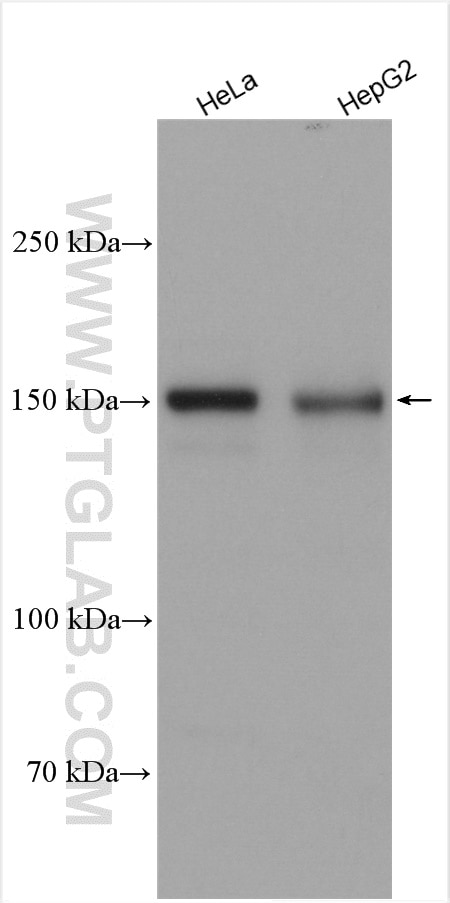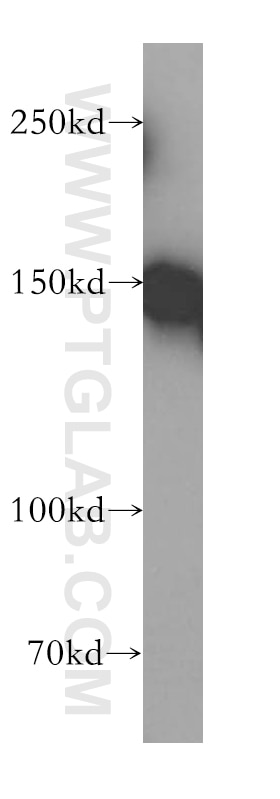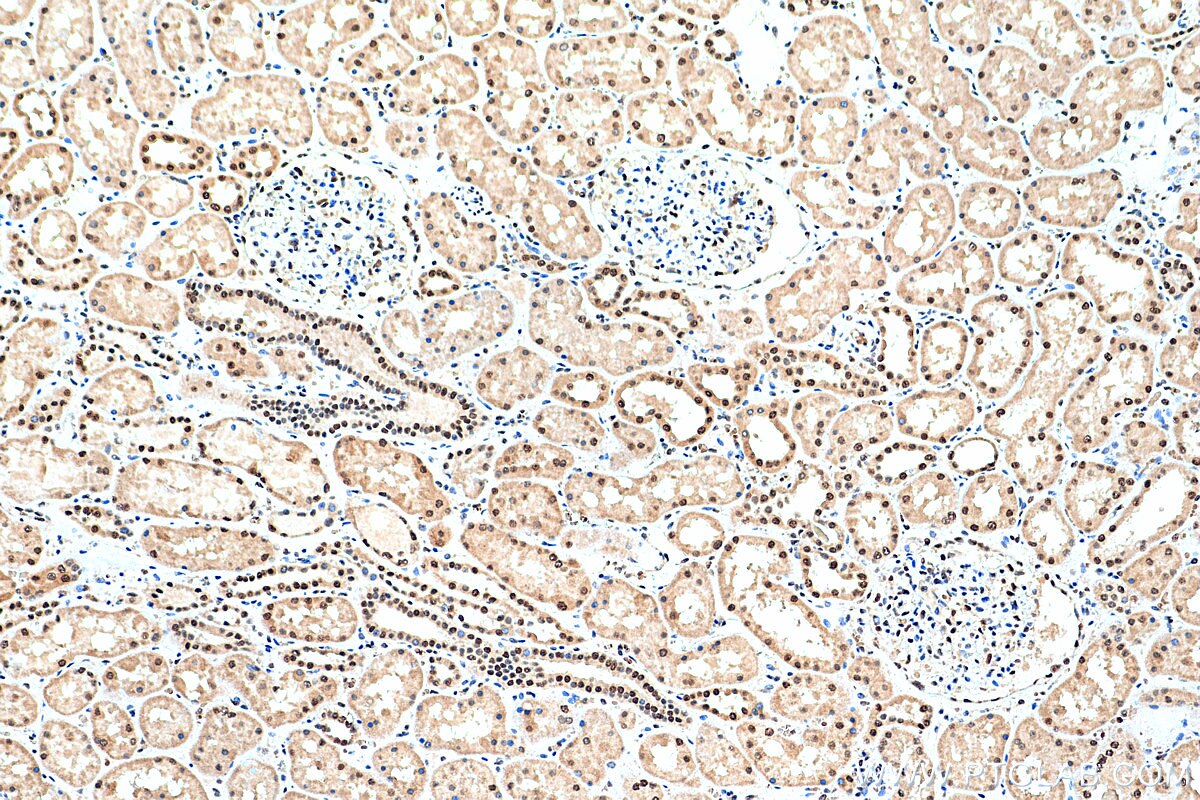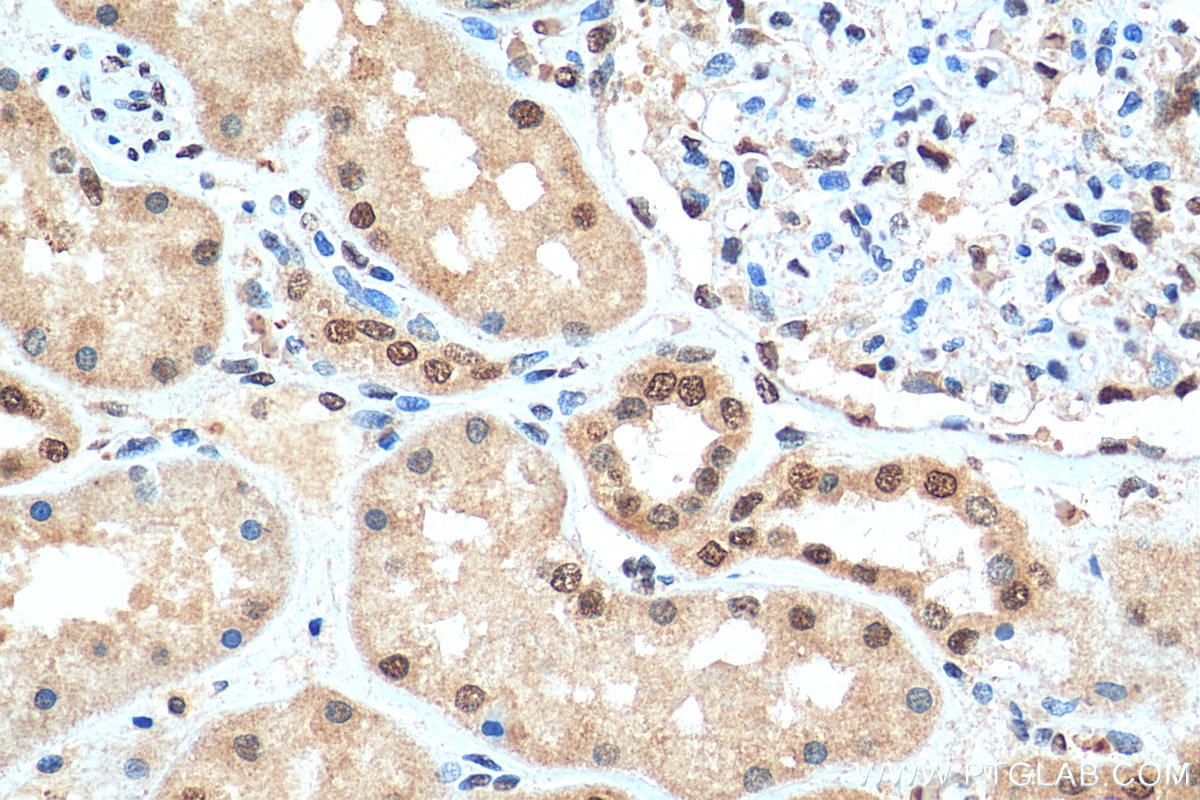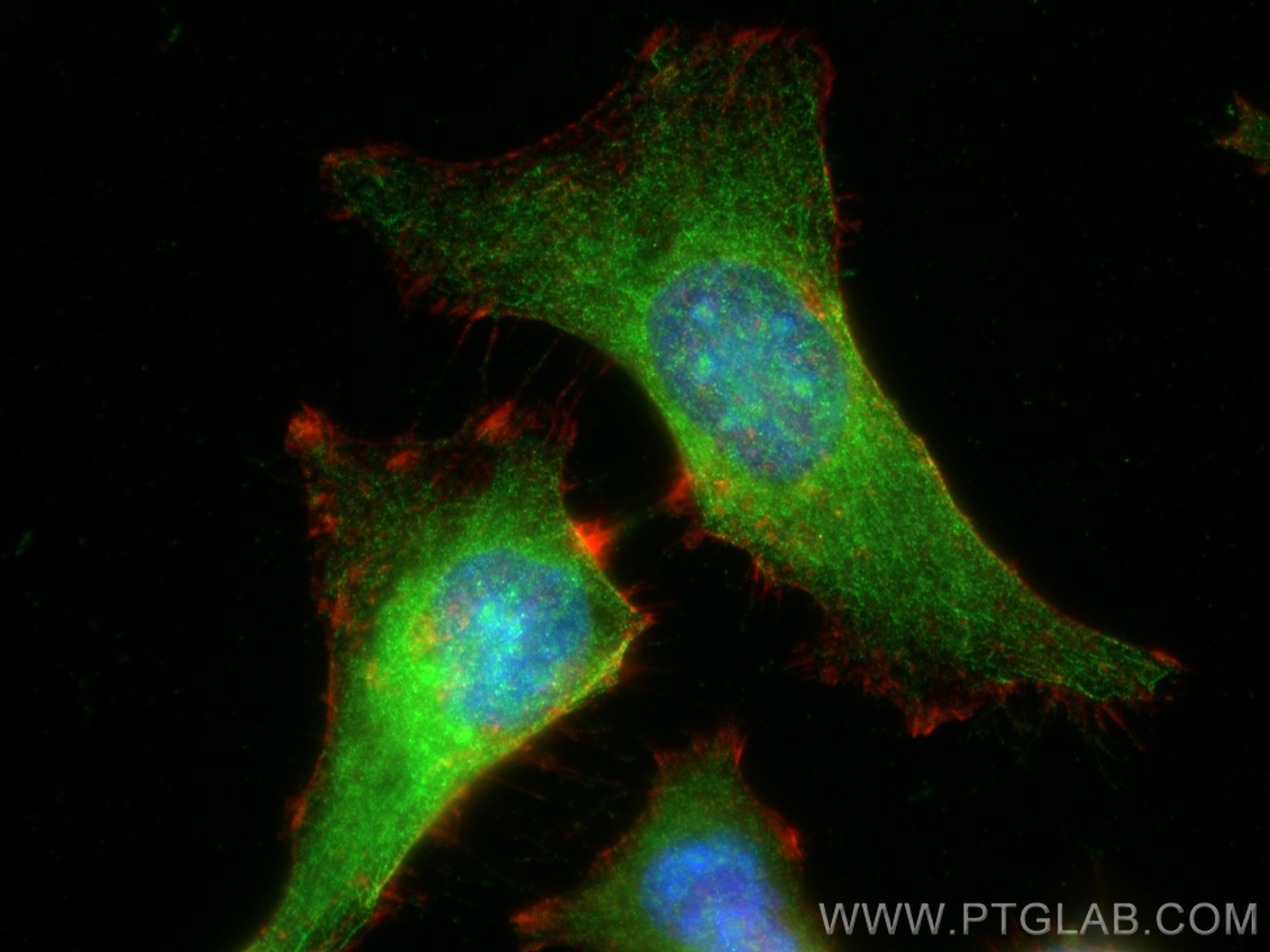- Phare
- Validé par KD/KO
Anticorps Polyclonal de lapin anti-RECQL4
RECQL4 Polyclonal Antibody for WB, IHC, IF/ICC, IF-P, IP, ELISA
Hôte / Isotype
Lapin / IgG
Réactivité testée
Humain et plus (1)
Applications
WB, IHC, IF/ICC, IP, ELISA
Conjugaison
Non conjugué
N° de cat : 17008-1-AP
Synonymes
Galerie de données de validation
Applications testées
| Résultats positifs en WB | cellules HeLa, cellules HepG2 |
| Résultats positifs en IP | cellules HeLa, |
| Résultats positifs en IHC | tissu de gliome humain, tissu rénal humain il est suggéré de démasquer l'antigène avec un tampon de TE buffer pH 9.0; (*) À défaut, 'le démasquage de l'antigène peut être 'effectué avec un tampon citrate pH 6,0. |
| Résultats positifs en IF-P | Customer Sample customer, |
| Résultats positifs en IF/ICC | cellules HeLa, |
Dilution recommandée
| Application | Dilution |
|---|---|
| Western Blot (WB) | WB : 1:1000-1:5000 |
| Immunoprécipitation (IP) | IP : 0.5-4.0 ug for 1.0-3.0 mg of total protein lysate |
| Immunohistochimie (IHC) | IHC : 1:50-1:500 |
| Immunofluorescence (IF)-P | IF-P : 1:50-1:500 |
| Immunofluorescence (IF)/ICC | IF/ICC : 1:200-1:800 |
| It is recommended that this reagent should be titrated in each testing system to obtain optimal results. | |
| Sample-dependent, check data in validation data gallery | |
Applications publiées
| KD/KO | See 2 publications below |
| WB | See 5 publications below |
| IHC | See 3 publications below |
| IF | See 3 publications below |
| IP | See 1 publications below |
Informations sur le produit
17008-1-AP cible RECQL4 dans les applications de WB, IHC, IF/ICC, IP, ELISA et montre une réactivité avec des échantillons Humain
| Réactivité | Humain |
| Réactivité citée | Humain, souris |
| Hôte / Isotype | Lapin / IgG |
| Clonalité | Polyclonal |
| Type | Anticorps |
| Immunogène | RECQL4 Protéine recombinante Ag10707 |
| Nom complet | RecQ protein-like 4 |
| Masse moléculaire calculée | 1208 aa, 133 kDa |
| Poids moléculaire observé | 145-150 kDa |
| Numéro d’acquisition GenBank | BC013277 |
| Symbole du gène | RECQL4 |
| Identification du gène (NCBI) | 9401 |
| Conjugaison | Non conjugué |
| Forme | Liquide |
| Méthode de purification | Purification par affinité contre l'antigène |
| Tampon de stockage | PBS with 0.02% sodium azide and 50% glycerol |
| Conditions de stockage | Stocker à -20°C. Stable pendant un an après l'expédition. L'aliquotage n'est pas nécessaire pour le stockage à -20oC Les 20ul contiennent 0,1% de BSA. |
Informations générales
RECQ protein-like 4(RECOL4), which has helicase domains contain 7 consensus motifs in the middle, is a gene responsible for Werner syndorme and Bloom syndrome. It forms a stable complex with UBR1 adn UBR2, which has a DNA-stimulated ATPase activity. RECOL4 may involve in repairment of DNA damage by interaction with APE1 and FEN1, key participants in base excision repair. This is a rabbit polyclonal antibody raised against part of C-terminal of RECQ4 of human origin. The calculated molecular weight of EIF3B is 133 kDa, but the modified EIF3B protein is about 145-150 kDa.
Protocole
| Product Specific Protocols | |
|---|---|
| WB protocol for RECQL4 antibody 17008-1-AP | Download protocol |
| IHC protocol for RECQL4 antibody 17008-1-AP | Download protocol |
| IF protocol for RECQL4 antibody 17008-1-AP | Download protocol |
| IP protocol for RECQL4 antibody 17008-1-AP | Download protocol |
| Standard Protocols | |
|---|---|
| Click here to view our Standard Protocols |
Publications
| Species | Application | Title |
|---|---|---|
Nat Commun DNA replication initiation factor RECQ4 possesses a role in antagonizing DNA replication initiation | ||
Cancer Biol Med RECQL4 regulates DNA damage response and redox homeostasis in esophageal cancer.
| ||
FASEB J UBE2O and USP7 co-regulate RECQL4 ubiquitinylation and homologous recombination-mediated DNA repair. | ||
J Biol Chem The Deubiquitinase USP28 Stabilizes Expression of RecQ Family Helicases and Maintains the Viability of Triple Negative Breast Cancer Cells. | ||
Sci Rep PARP1 regulates DNA damage-induced nucleolar-nucleoplasmic shuttling of WRN and XRCC1 in a toxicant and protein-specific manner. | ||
bioRxiv USP50 suppresses alternative RecQ helicase use and deleterious DNA2 activity during replication |
